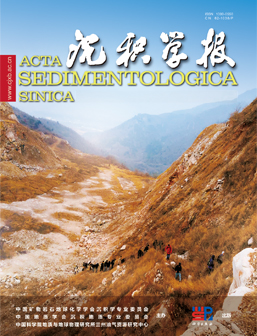Multiphase Saline Diagenetic Fluid Activity in the Dengying Formation of the Central Sichuan Paleo-Uplift: Implications for Reservoir Development
doi: 10.14027/j.issn.1000-0550.2025.044
- Received Date: 2025-06-24
- Available Online: 2025-10-05
-
Key words:
- diagenetic fluids /
- diagenetic evolution /
- dolomite /
- effect on reservoir formation /
- deep to ultra-deep petroleum reservoirs
Abstract: [Objective] Pore fluids, especially saline pore fluids, are widespread in sedimentary basins; however, their characteristics undergo substantial changes throughout the burial process. Such change has a great influence on the formation and modification of deep to ultra-deep petroleum reservoirs; thus, determining the variations of saline pore fluids during burial can help elucidate the formation mechanisms of these reservoirs. [Methods] The Dengying Formation of the central Sichuan paleo-uplift was thus studied. By integrating the δ13C, δ18O, 87Sr/86Sr, clumped isotopes, and U-Pb age data of the main products formed by saline fluid activity, the genesis of these products, the fluid-charging sequences, and the influence of saline fluid activity on reservoir development were investigated. [Results and Discussions] The results show that the Dengying formation was characterized by the development of five types of products associated with saline fluid activity: matrix dolomite (D1), fibrous or micrite to very fine-crystalline dolomite rim (D2), leaf or fine-crystalline dolomite (D3), medium to coarse crystalline dolomite (D4), and saddle or mega-crystalline dolomite (D5). These five types of dolomite display differences in δ13C, δ18O, 87Sr/86Sr, T(Δ47), and U-Pb ages, and thus correspond to five phases saline diagenetic fluid activity. [Conclusions] A comprehensive investigation shows that the general diagenetic sequence of these dolomite is as follows: 1) D1 formed by seawater dolomitization, 2) D2 generated by the reflux dolomitization of (evaporated) seawater, 3) D3 originated via the dissolution of early-formed D1 and D2 followed by reprecipitation, 4) D4 precipitated from the mixing of formation waters and hydrothermal fluids, and 5) D5 formed from by the influx of deep-sourced 87Sr-rich hydrothermal fluids. Early-stage? saline diagenetic fluid activity (i.e., the 1st and 2ed stages) ?enhances? the ability of reservoir rocks to resist physical and chemical compaction, favoring reservoir formation; ?conversely?, ?late-stage? saline diagenetic fluid activity (i.e., the later three stages) ?degrades? petrophysical properties by precipitating abundant dolomite cements within void spaces. Thus, saline diagenetic fluid activity controls the evolution of reservoirs through two-phase differential diagenesis. These findings may help the petroleum exploration in deep to ultra-deep carbonate formations.
| Citation: | Multiphase Saline Diagenetic Fluid Activity in the Dengying Formation of the Central Sichuan Paleo-Uplift: Implications for Reservoir Development[J]. Acta Sedimentologica Sinica. doi: 10.14027/j.issn.1000-0550.2025.044 |






 DownLoad:
DownLoad: